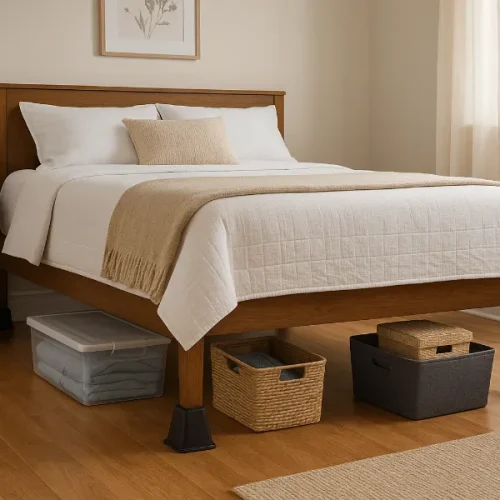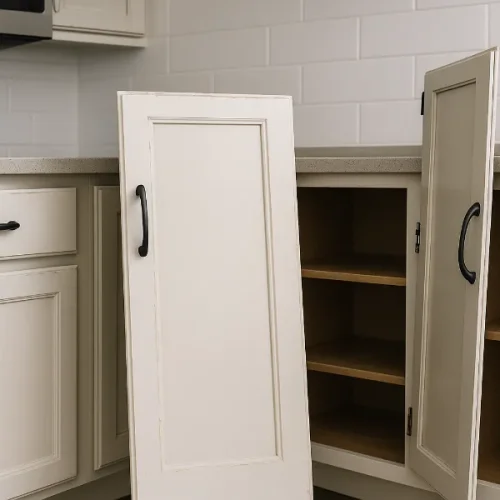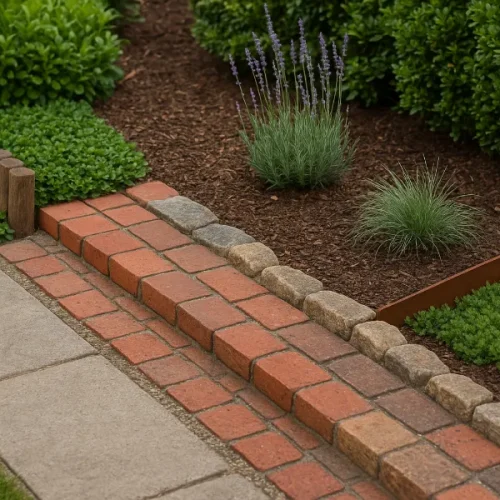
The act of moving brings both positive change and unexpected emotional responses. The process of moving requires you to handle multiple moving tasks, which can create such disruption that it affects even people who maintain perfect organization. The process challenges include handling relocation details, adjusting to new environments, and saying goodbye to your current home. The process of moving becomes more manageable when you prepare yourself both physically and mentally.
The following section guides you through the physical and mental aspects of moving to help you make a successful transition into your new chapter.
Practical Moving Tips to Reduce Stress Early On
The process of emotional work requires you to handle your basic needs first. Your ability to stay organized at the start will help you avoid overwhelming situations in the future.
Start early and plan backward
Choose your moving date first, then create a schedule leading up to that day. Divide large moving tasks into smaller weekly objectives for better organization. This approach helps you maintain realistic expectations for your work while avoiding stressful last-minute situations.
Declutter with intention
The relocation process gives you the chance to discard all items that no longer have value. You should get rid of everything that serves no purpose by either donating it, selling it, or simply throwing it away. The number of items you bring to your new home determines the weight of your move because it affects both your physical burden and your emotional state.
Organize your packing
Place boxes with room labels and content descriptions on their exterior surfaces. Using color codes and numbers during unpacking operations will help you save time. Designate one box as “Open First” to store essential items, including toiletries, basic kitchen supplies, and a change of clothes.
Recruit help early
You should arrange moving assistance before the final week to reduce your moving stress. Your moving process will become less stressful when you find a team of helpers before moving day, especially if you choose experienced moving companies like Mayflower that can handle the heavy lifting efficiently.
Prepare a moving essentials bag
Prepare a compact bag containing essential items, which include documents, chargers, medications, snacks, and personal comfort items. The availability of these items near you will provide a sense of control during this period of change.
Your emotional processing becomes possible once you have addressed all your logistical needs.
Understanding the Emotional Rollercoaster of Moving
The process of moving creates stronger emotional reactions than most people anticipate. The method of moving your possessions requires you to leave behind everything you know. People experience a range of emotions when driving, including denial, anxiety, excitement, sadness, and relief.
You will start by focusing on practical duties while trying to avoid the emotional impact of your situation. The approach of moving day will trigger both positive memories and negative worries in you. The feeling of being alone in your new space might become apparent after your relocation. Understanding that this emotional pattern occurs naturally helps you handle it better than trying to fight it.
Mindset Shifts: Turning Anxiety into Anticipation
Your perspective on the move determines what you will experience during this time. A few minor changes in your mental approach will transform your stress into motivational energy.
Reframe your story
Instead of seeing the move as a loss, think of it as an expansion of your life. You’re not abandoning your old home—you’re carrying its lessons and memories into something new.
Visualize your new environment
Spend a few minutes each day imagining your life in your new space. Picture your morning coffee spot, your evening walk, or your favorite reading corner. This small act builds excitement and lowers fear.
Acknowledge what you’re leaving behind
Take time to say goodbye to your old home and neighborhood. Walk through each room. Reflect on what you’ve experienced there. Closure gives you peace, making it easier to move forward without regret.
Grounding Strategies for Emotional Balance
During a move, it’s easy to lose your sense of balance. Everything changes at once—your environment, your routines, even the people around you. Grounding practices help you stay centered amid the shift.
Try a few simple techniques:
- Pause and breathe. When you feel tension rise, take a few deep breaths. Slow breathing signals to your body that it’s safe.
- Journal regularly. Write about what you’re feeling, not just what you’re doing. Seeing your thoughts on paper can help you process them instead of letting them build up.
- Create mini routines. Even if you’re surrounded by boxes, make time for small rituals—a morning stretch, an evening walk, or your favorite playlist. Familiar patterns keep your mind steady.
You don’t need to meditate for an hour or overhaul your habits. The goal is consistency, not perfection.
Coping with the Transition After the Move
Once you’ve arrived, the real adjustment begins. The adrenaline fades, and what’s left is a new environment that doesn’t yet feel like yours. That’s when post-move blues can creep in.
Give yourself grace. It’s normal to feel unsettled for a while. Start small by unpacking one area at a time instead of tackling the entire house in a weekend. Add personal touches—photos, candles, or plants—that instantly make a space feel more like home.
Rebuild your sense of belonging by connecting with your surroundings. Explore local cafés, parks, or shops. Introduce yourself to neighbors. Every small interaction builds familiarity and comfort.
Routines are powerful here. Wake up at the same time, cook in your new kitchen, and find a local route for your walks. Structure brings stability when everything else feels new.
Moving as an Act of Growth
Moving is never just about changing locations. It’s about stepping into a new version of yourself. It tests your patience, adaptability, and ability to trust the unknown.
Each box packed, each memory revisited, and each new start teaches resilience. With preparation, awareness, and compassion, what begins as chaos can truly become calm.
In the end, emotional preparation isn’t about eliminating stress—it’s about learning to move through it with clarity. When you approach your move with both practicality and mindfulness, you don’t just relocate; you transform. You evolve.
FAQs
Moving involves change, loss, and adaptation, which naturally trigger emotional responses such as stress, sadness, or excitement.
Start planning early, break tasks into small steps, and keep essential items organized to avoid last-minute pressure.
Yes. Homes hold memories and meaning, so it’s natural to feel grief or nostalgia when closing that chapter.
Visualizing your new environment, establishing routines, and exploring your surroundings can help reduce anxiety.
Declutter first, label boxes clearly, and pace the packing process over days or weeks rather than rushing at the end.
Yes. Asking friends, family, or professionals for assistance reduces physical and emotional strain.
Adjustment times vary, but most people begin to feel comfortable within a few weeks to a couple of months.
Reach out to neighbors, join local activities, and maintain regular contact with loved ones to rebuild social support.
Yes. Writing helps you understand and release your emotions, making the transition feel more manageable.
Start by unpacking personal comfort items like photos, blankets, or plants to bring familiarity into your new space.













